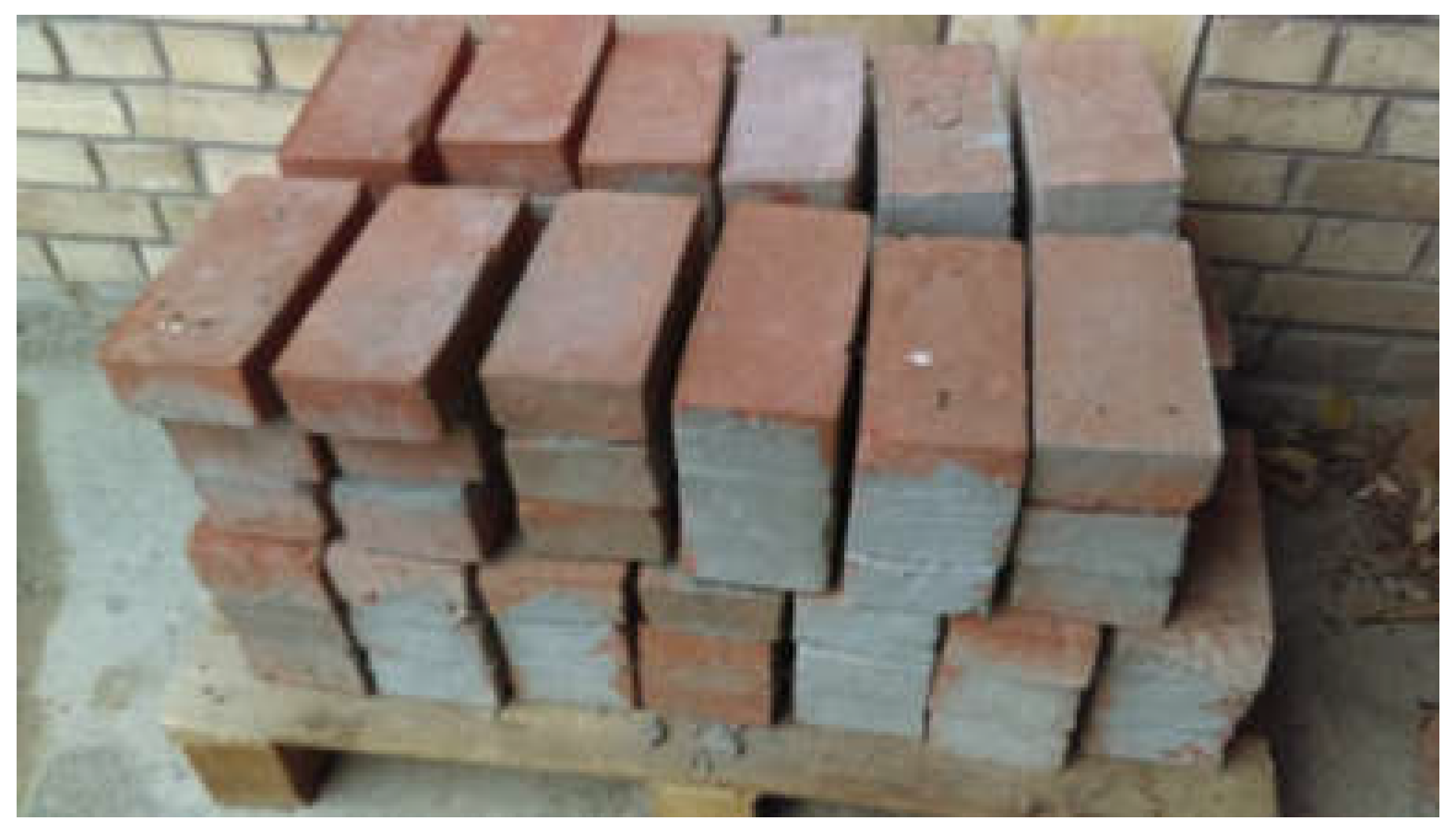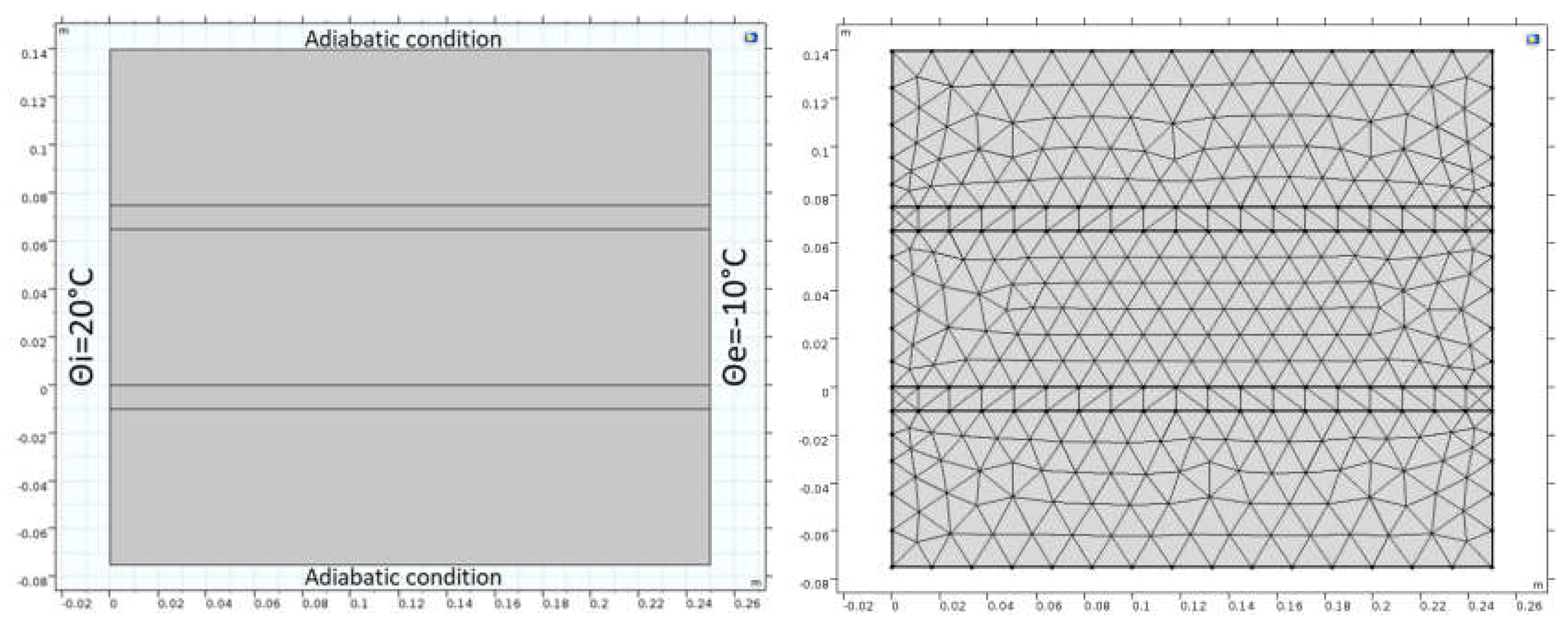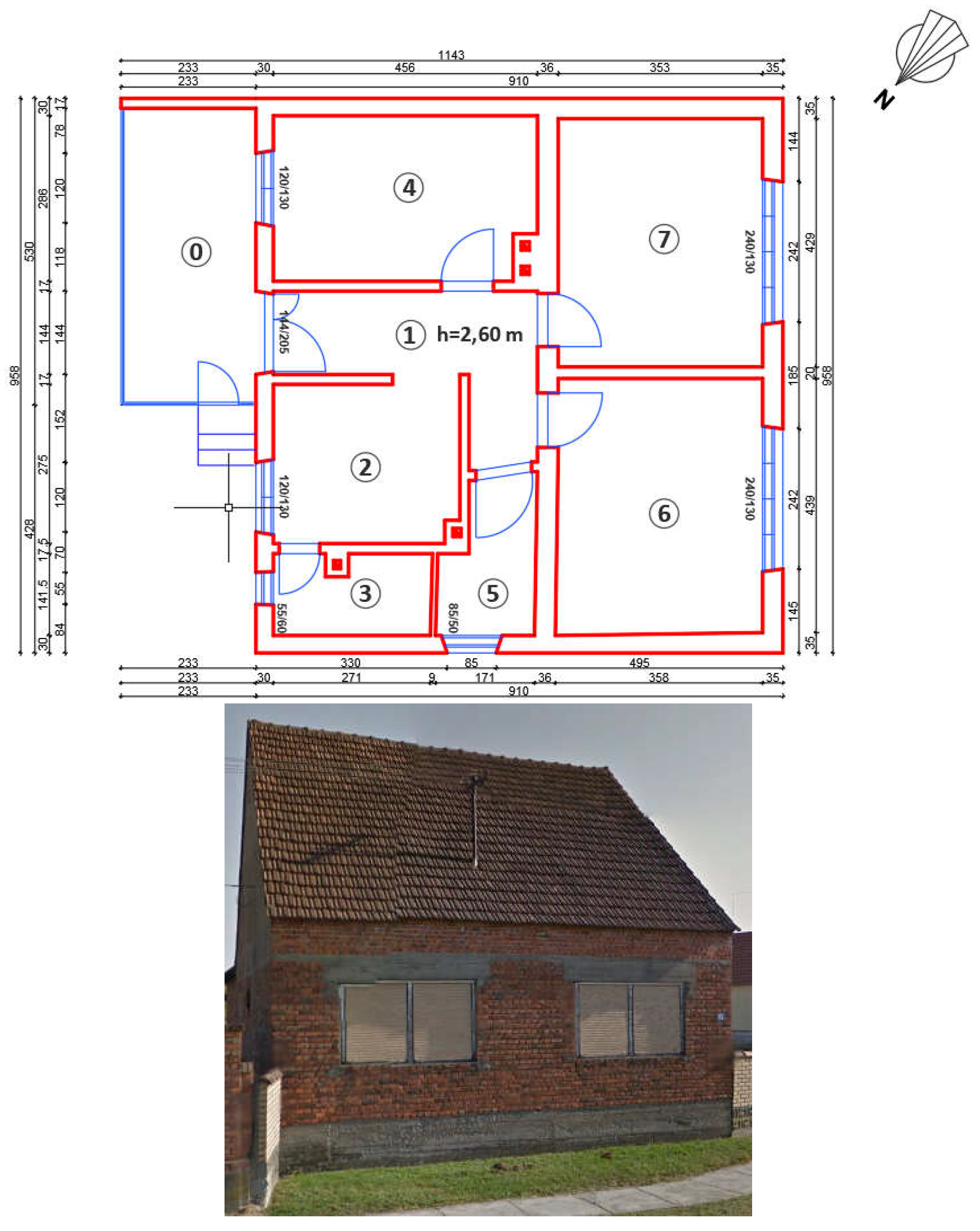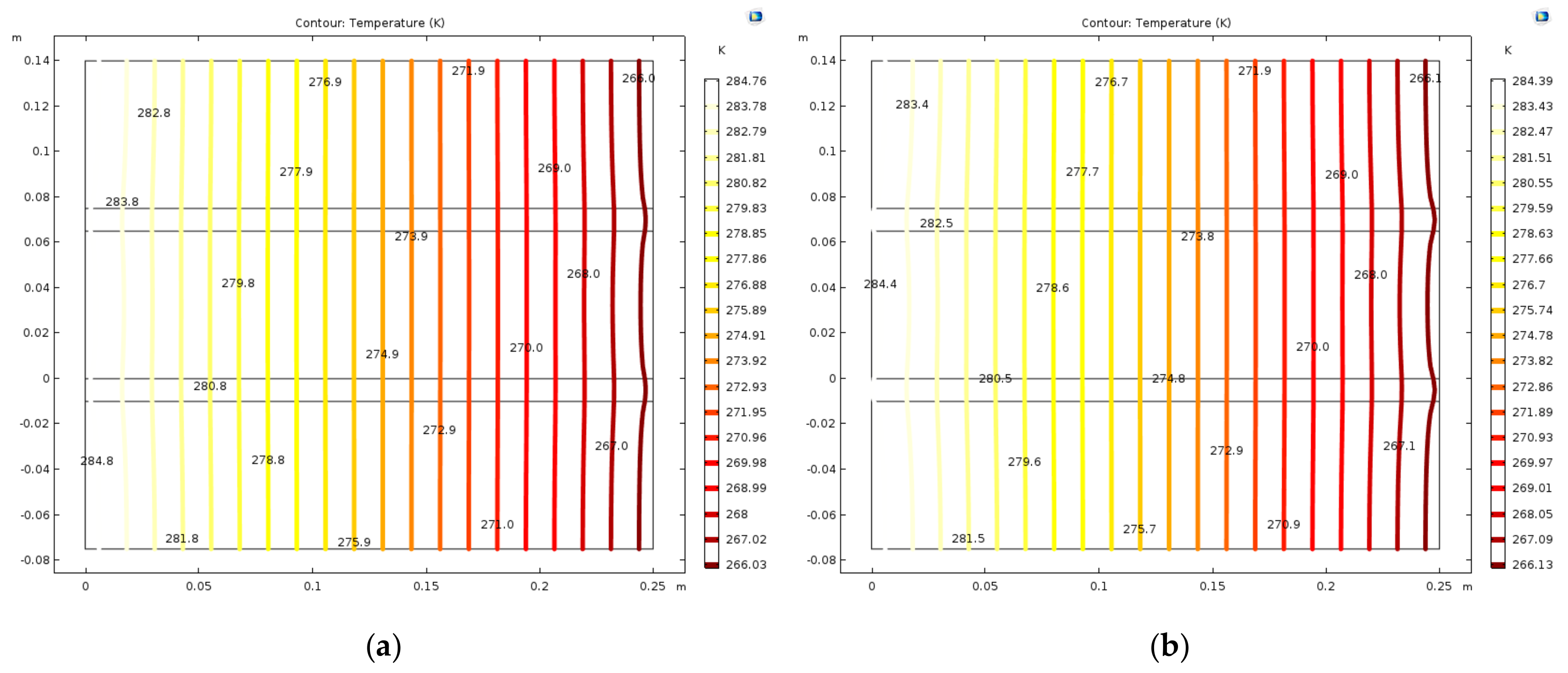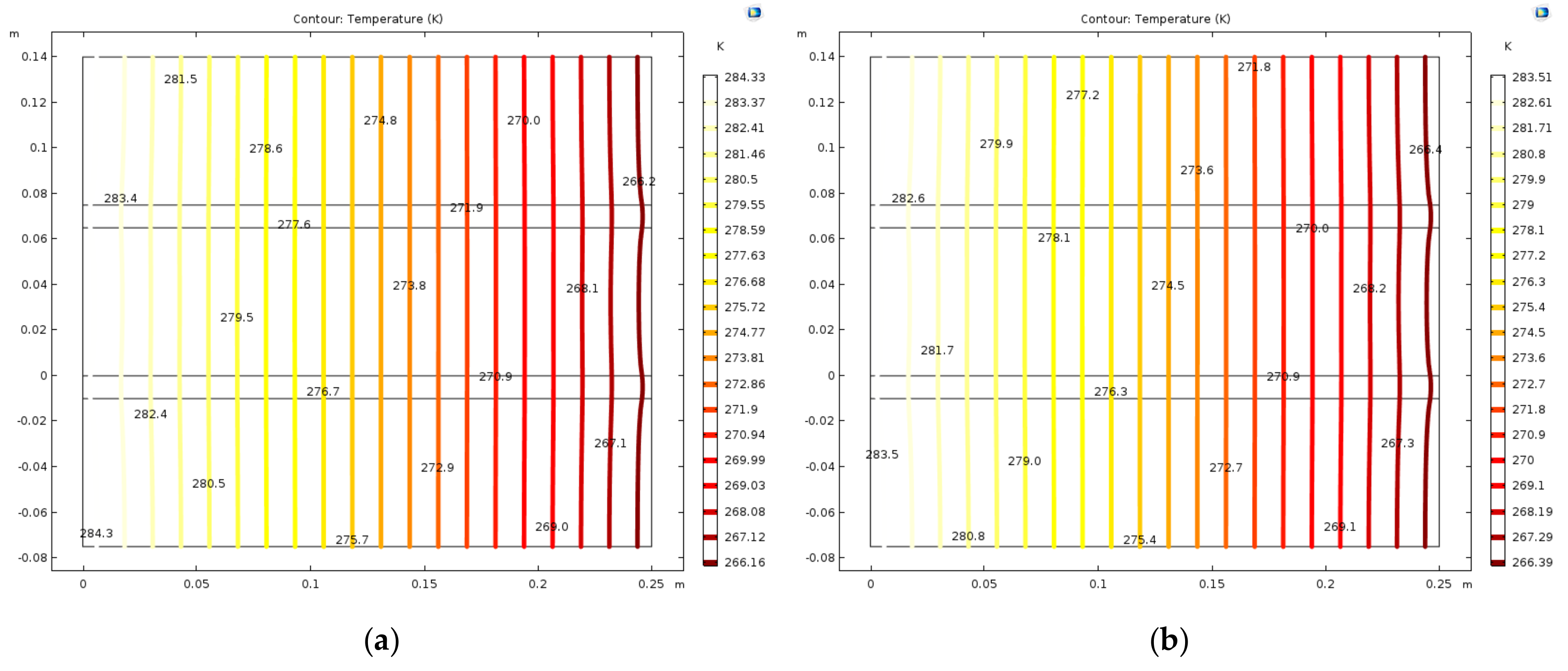The durability of buildings has become one of the most pressing issues in contemporary building construction. Often the basic properties of buildings weaken after only ten years. The numerous causes of building deterioration manifest in terms of the partial or full building destruction, extension and remodeling, repurposing, etc. The most frequent cause of masonry structure deterioration is humidity/moisture. Regardless of the manner, it entered the wall, humidity can cause an entire range of building degradation mechanisms, i.e., chemical processes that alter the masonry unit and the building properties. Therefore, the buildings no longer perform in the manner in which they were designed to, which is indicated by means of wall surface damage, spalling, change in color, crumbling, increased permeability, cracking, swelling, or shrinkage. The most significant building degradation mechanisms caused by moisture include [
1,
2] mineral alteration, salt crystallization, freezing/thawing damage, and biological colonization. The freezing action in a masonry unit/brick occurs when the temperature drops below 0 °C, at which point the process of water freezing inside the brick is initiated. The expansion of ice results in the increase of stresses within the material. The intensity of the stress caused by freezing depends on the number of pores in the material and on the level of its saturation [
3]; a higher proportion of pores causes greater stress, whereas, in the case of a low saturation level, the stress is negligible because the free space in the pores allows the water to expand during freezing. If the generated stress exceeds the brick strength, the brick will be damaged, owing to the repeated freezing and thawing cycles. Apart from affecting the mechanical properties of masonry units, humidity has a negative effect on their thermal properties as well. The thermal conductivity value of porous building materials increases rapidly with the increase in their moisture content; consequently, the insulation capacity decreases and the heat loss increases [
4,
5,
6,
7,
8,
9,
10,
11,
12,
13,
14,
15]. The increase in the thermal conductivity of a material with the increase in its moisture content is the direct result of the fact that water, which has replaced the air in the pores of the material, has a thermal conductivity value of 0.61 W/(mK) at air temperature [
16], which is twenty-four times higher than that of air. Although the conductivity coefficient increases continuously with the increase in the moisture level of the material, it is necessary to stress that the initial increase in the moisture content causes a sharp increase in the conductivity coefficient. The sharper increase in the value of the coefficient at a lower moisture level is explained by the fact that during the wetting of the material, water first fills the finer pores and capillaries, whose effect on the thermal conductivity is more significant than that of the larger pores. The thermal conductivity increases additionally in the case where water freezes within the material because the thermal conductivity value of ice exceeds 2.0 W/(mK) [
17], which is approximately four times higher than that of water.
The decreased mechanical properties of wall units owing to the influence of humidity and, consequently, owing to the influence of freeze/thaw cycles, will directly affect the walls, which consist of such units. At present, the estimation of the actual energy performance of buildings has become a priority to achieve energy conservation; therefore, it is important to evaluate the thermal performance of masonry considering all influencing parameters on the energy performance of buildings. Recent research performed conducted Litti et al. [
13] on areas that were detected to be wet revealed thermal transmittance values that were more than three times higher than those of the dry areas on the same masonry surface. Considering the aforementioned points, it is extremely important to quantify the actual thermal transmittance of the wall and the influencing factors in order to be able to plan optimal refurbishment interventions.
According to EN 771-1 [
18], the freeze/thaw resistance category of a clay masonry unit shall be declared by the manufacturers in reference to its applicability to masonry, or elements subjected to passive, moderate, and severe exposure (F0, F1, and F2, respectively). However, there is also a possibility for manufacturers not to test all the properties of their product. This should be clearly indicated in the Declaration of Performance, marking the non-tested property as NPD (no performance determined). The same procedure is followed for the testing of the brick resistance to freeze/thaw cycles. In this manner, bricks that are not resistant to freeze/thaw cycles can be made available in the market. According to Reference [
19], one out of eight brick types available in the market are non-resistant to freeze/thaw cycles. In larger buildings, the designer will prescribe the need for masonry units to be tested in freeze/thaw cycles. For smaller buildings, such as family houses, such a need is omitted; consequently, bricks that are not resistant to freeze/thaw cycles can be inbuilt. Family houses often remain unplastered, which directly allows atmosferills to affect the properties of the materials and the structure.
In this study, the influence of freeze/thaw cycles on the mechanical and thermal properties of bricks and mortar as building parts of masonry walls will be investigated, as well as the influence on a masonry wall itself. To study the influence of freezing on the energy demand characteristics of masonry buildings, in terms of energy conservation and greenhouse gas emission, a case study will be investigated on the typical structure of a historical building located in Croatia that has undergone a process of energy certification.
